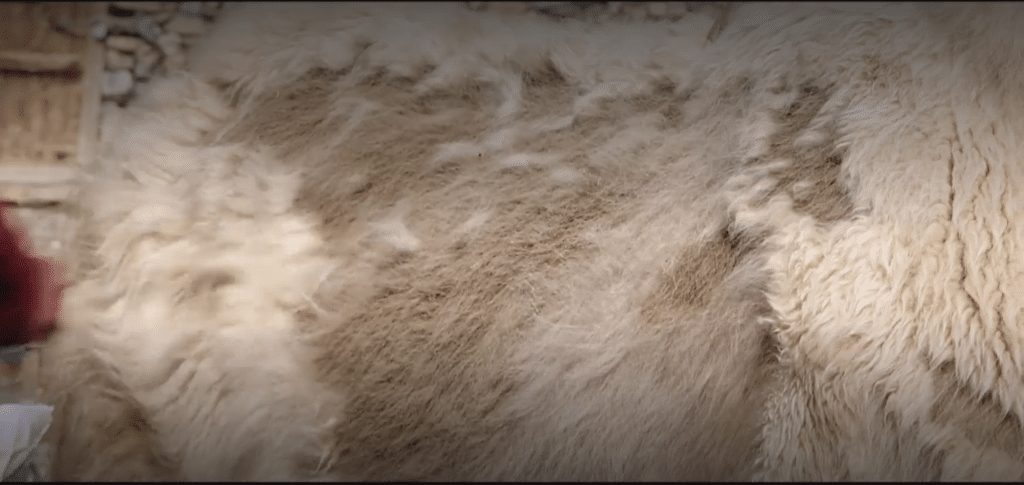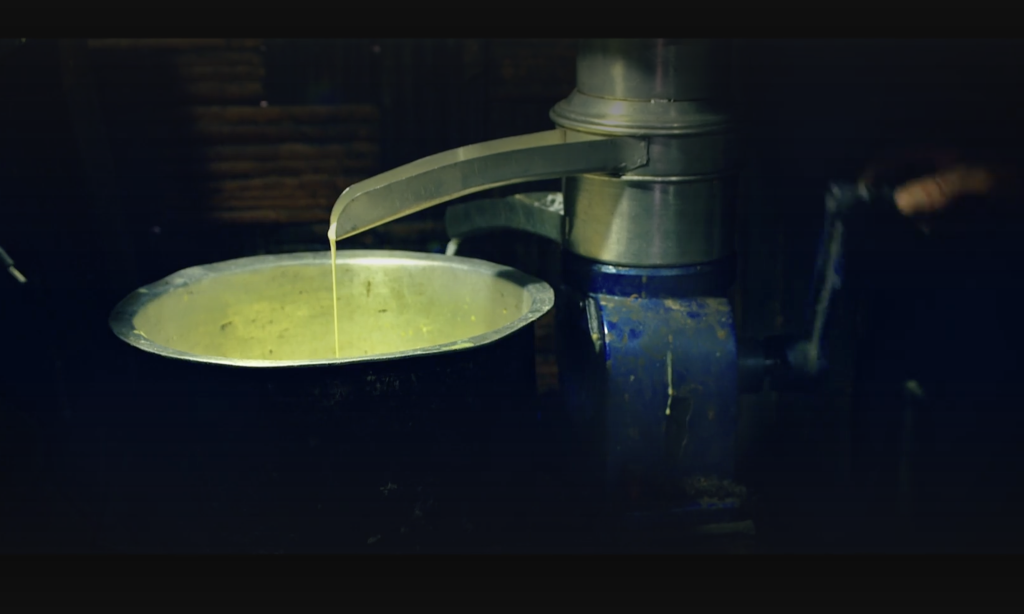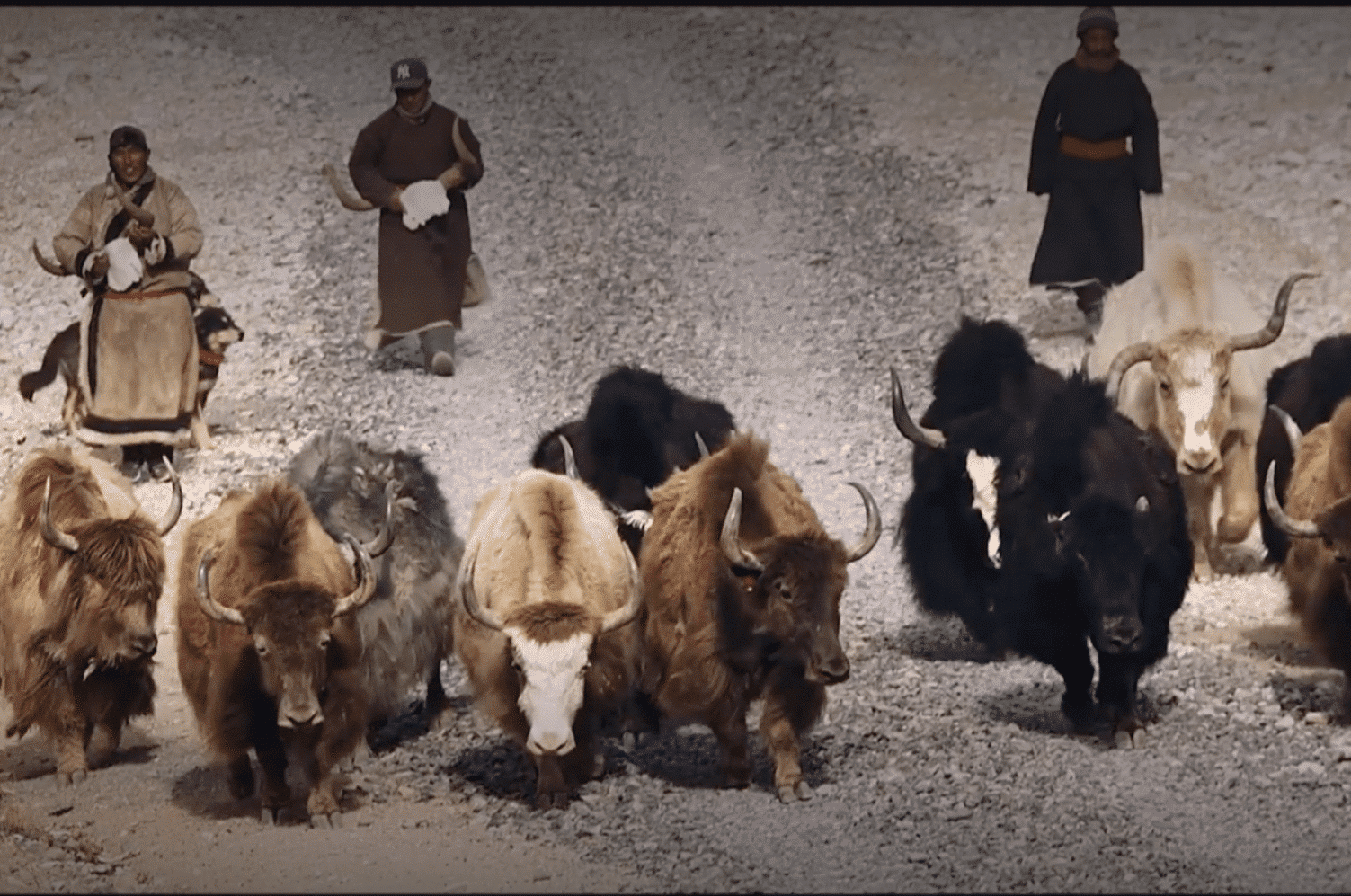Take home message
- Under harsh conditions (cold; high altitudes), people are glad, that they have ruminants like the cow or the Yak. These ruminants provide humans with nutrition, as well as traction.
- Yak milk and the fermented products from Yak milk are very high-quality products in terms of fatty acids, but also especially bacteria and yeasts. Cattle herders did not eat vegetables and fruits, but they ate fermented milk. They let the bacteria and yeasts do the work.
The habitat of the Yak
In northern India, Butan and China (including Himalayas, Ladakh and Highlands of Tibet), nomads live up to high altitudes. They can only survive at this altitude (3000 to 5400 m) because of their Yak (Bos grunniens). Yak are larger ruminants, domesticated by humans like the cow (Auerochs). Yak selection started in India about 7,500 years ago, and there too, like in French Lascaux, one finds petroglyphs depicting the Yak. Auerochs have been exterminated by humans, but herds of wild Yak (Bos mutus) still live in the Tibetan Highlands. Wild Yaks have black skin and the bulls can reach a shoulder height of 200 cm, weighing 1,200 kg.
Yaks have an enlarged heart and a large lung capacity because of the lower oxygen tension in the atmosphere up high in the mountains: a lot of air has to be inhaled to cover oxygen requirements. On the Tibetan ‘roof of the world’, there is 100-150 days of grass growth and ± 7 months of no growth, with partly thick snow cover (Shah et al., 2023). Tamed Yaks live on scanty, lean forage in summer, in winter they have to quench their thirst by eating snow and ice; food scarcity for the animals also prevails then.
Yak and usefulness to humans
The domesticated Yak provides many products, which enable us humans to survive: obviously milk and dairy products (butter, cheese, kurut), but also meat and wool. Due to the cold environment, the animals form an undercoat from fine hair, which is ‘plucked’ in spring (compare down feathers in the goose). Besides the dense undercoat, the animals have an outer coat of long hair plus a thick skin to protect them from the cold. The wool hairs are used to make clothes, as well as blankets and the tent roof covering. What is also important is the dung. Yak manure look more like horse turds, and are dried in summer to be used as fuel, even in winter. Yak butter is used as food, but also to grease one’s skin (sunburn, protection against cold/frost, insect bites, wound healing), to treat the Yak’s teats with, or as lamp oil. Finally, shepherds use the Yak as a riding and draft animal. For humans and animals, survival is a hard task. Winter temperatures are below -35o C. Without the genial Yak, humans would not be able to survive here. Yaks were therefore naturally worshiped, there are Yak dances, renunciation rituals, and masks honoring the Yak.

Yak-milk
A Yak cow produces very little milk daily, more like our dairy sheep. The calf has to be near her for the milk to let the milk flow. Only 150-500 kg is left per cow in a lactation of about 5-6 months, mainly produced when there is summer grass. It is characterised by high levels of fat (5.5-7.5%), protein (4.9-5.9%) and lactose (4.0-5.9%). It is also called ‘thick, rich’ milk. In summer, it is yellow in colour due to the increased carotene content in the milk fat. There are differences in production between breeds and regions (altitudes). In conjunction with the habitat (altitude, fresh grass) and very low milk production, Yak milk fat contains very high levels of pasture CLA = CLAc9t11 (rumenic acid) and C18:3c9c12c15 (alpha linolenic acid), while the monounsaturated fatty acid (MUFA) content is also high. Furthermore, the milk has an omega-6/-3 ratio of around 2, similar to good organic cow’s milk. Due to the high levels of essential fatty acids and also the many secondary plant contents, Yak milk is a ‘nutrient-dense food’, a food with a high nutritional value in terms of ingredients. Outcomes depend on both the month of sampling and the altitude. The antioxidant vitamins A and E increase with higher altitude, however B vitamins (B1 and B2) actually decrease (Yang et al., 2021).
How the fatty acids change corresponds to that also found with the dairy cow in Europe and under alpine conditions. With the Yak, everything is a bit more extreme, mainly because of the very low milk yield, the short grazing season and the very high altitude of the grazed pastures.

Traditional food of mountain shepherds
Nomads in the highlands of Tibet live on barley and Yak dairy, which may or may not be fermented and/or further processed. Children and the elderly take the raw, non-fermented milk. There is also the boiled milk, which is drunk in tea (‘milk-tea’). A staple food for Tibetan herdsmen is kurut, a raw fermented Yak milk, which takes 7-10 days to ferment spontaneously. Unlike yogurt (>40o C) or kefir (24-28o C), Karut is fermented at low temperatures (10-15o C). Making Karut is a continuous ongoing process. Karut has high numbers of live lactic acid bacteria (10log 9.2) and yeasts (10log 8.3) per ml. Its pH is 3.72, below that of kefir (Zhang et al., 2008). Like kefir, karut is also slightly alcoholic as yeasts further break down lactic acid into ethanol. Raw milk butter is made from the cream, which can be stored for up to 2 years. In this way, they manage to utilise summer surpluses during the lean seasons.
We described earlier, that there were natural living peoples, who lived off the products of their ruminants, in this case the dairy cow in Switzerland. The combination of raw-milk dairy and a grain product from Tibet is very similar to Weston A. Price’s description of the traditional dairy farmers in Lötschen valley, Switzerland, who lived off their sourdough-grown rye bread and raw milk and milk products, especially the ripened mountain cheese. Price: ‘the children in the villages ate a slice of bread topped with a slice of cheese that was about as thick as the bread itself. In addition, they drank cow’s milk’. Swiss, raw-milk mountain butter (extracted when cows graze at the snowline in the month of June) is more likely to be mentioned as a special food (‘medicine’) for pregnant and lactating women.
In both peoples, the diet is rather one-sided and lacks vegetables and fruits. Dairy products in Tibet include milk, butter, ghee, cream, kurut (‘yogurt’) and Qula (‘dried curd’), occasionally supplemented by sheep and Yak meat. Yak milk and butter are mixed with tea and drunk every day by the nomads. Qula is in the sun-dried curd. Qula is as a snack when herding their grazing animals, along with milk and tea, or is mixed with butter and barley flour to make Zanba. Of all the Yak dairy products, yogurt (‘kurut’) is the most important in economic and nutritional terms. Yogurt is consumed by the nomads themselves in quantities of 1 to 2 kg per day, and is more similar to kefir than yogurt in terms of bacteria and yeasts. This quantity covers most of the daily fat and protein requirements.
Thanks to their ruminants, livestock farmers have made a living for centuries, surviving not only in very extreme conditions, but eventually in all parts of the world; simply based on raw and raw-fermented milk products.
Literature
- Dong, S. K., Long, R. J., & Kang, M. Y. (2003). Milking and milk processing: traditional technologies in the yak farming system of the Qinghai‐Tibetan Plateau, China. International journal of dairy technology, 56(2), 86-93.
- Guo, X., Long, R., Kreuzer, M., Ding, L., Shang, Z., Zhang, Y., … & Cui, G. (2014). Importance of functional ingredients in yak milk-derived food on health of Tibetan nomads living under high-altitude stress: a review. Critical reviews in food science and nutrition, 54(3), 292-302.
- Yang, L., Yang, C., Chi, F., Gu, X., & Zhu, Y. (2021). A survey of the vitamin and mineral content in milk from yaks raised at different altitudes. International Journal of Food Science, 2021.
- Shah, A. M., Bano, I., Qazi, I. H., Matra, M., & Wanapat, M. (2023). “The Yak”—A remarkable animal living in a harsh environment: An overview of its feeding, growth, production performance, and contribution to food security. Frontiers in Veterinary Science, 10, 1086985.
Video about the Yak
Four broadcasts about ruminants appeared on ARTE-TV. This one was about the Yak:
https://www.arte.tv/de/videos/086098-004-A/muh-die-geschichte-des-hornviehs-4-4/
Photo credit: taken from a screenshot from the broadcast on ARTE




